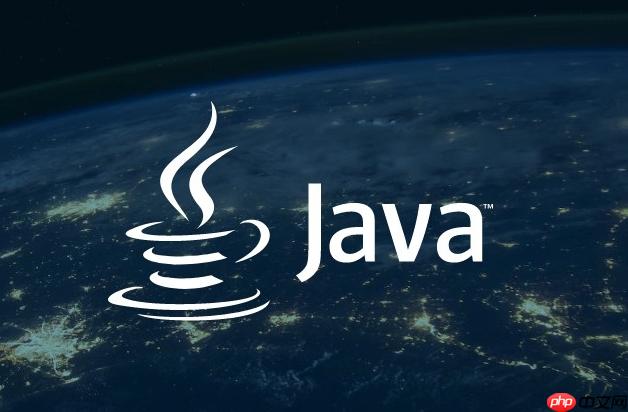java构建小程序多店铺管理的核心在于实现数据隔离,确保各店铺数据互不干扰。主要策略包括:1.数据库级别隔离(每个店铺一个数据库或schema/namespace,隔离性强但管理复杂);2.表级别隔离(每个店铺一张表或公共表+shop_id,后者更常用且管理方便);3.代码级别隔离(通过threadlocal实现多租户上下文);4.权限控制(基于rbac模型)。实际开发中通常采用公共表+shop_id结合多租户上下文与权限控制以平衡隔离性与维护成本。

Java构建小程序多店铺管理,核心在于数据隔离。简单来说,就是让每个店铺的数据互不干扰,保证数据安全和业务逻辑的正确性。实现方式有很多种,但目标都是一样的:隔离!

实现Java小程序多店铺管理的数据隔离,通常有以下几种策略,可以单独使用,也可以结合使用:
数据库级别隔离:
立即学习“Java免费学习笔记(深入)”;

表级别隔离:
代码级别隔离:

权限控制:
实际开发中的选择:
在实际开发中,通常会选择公共表+店铺ID的方式,配合代码级别的多租户上下文和权限控制。
代码示例 (简化版):
public class TenantContext {
private static final ThreadLocal<Long> currentTenantId = new ThreadLocal<>();
public static void setTenantId(Long tenantId) {
currentTenantId.set(tenantId);
}
public static Long getTenantId() {
return currentTenantId.get();
}
public static void clear() {
currentTenantId.remove();
}
}
// 在Service层使用TenantContext
@Service
public class ProductService {
@Autowired
private ProductRepository productRepository;
public List<Product> getProductsByTenant() {
Long tenantId = TenantContext.getTenantId();
if (tenantId == null) {
throw new RuntimeException("Tenant ID not found in context.");
}
return productRepository.findByTenantId(tenantId);
}
}
// ProductRepository
public interface ProductRepository extends JpaRepository<Product, Long> {
List<Product> findByTenantId(Long tenantId);
}
// 在拦截器或过滤器中设置TenantId
public class TenantInterceptor implements HandlerInterceptor {
@Override
public boolean preHandle(HttpServletRequest request, HttpServletResponse response, Object handler) throws Exception {
// 从请求头或参数中获取tenantId
String tenantIdStr = request.getHeader("X-Tenant-ID");
if (tenantIdStr != null && !tenantIdStr.isEmpty()) {
try {
Long tenantId = Long.parseLong(tenantIdStr);
TenantContext.setTenantId(tenantId);
} catch (NumberFormatException e) {
// 处理tenantId格式错误的情况
}
}
return true;
}
@Override
public void afterCompletion(HttpServletRequest request, HttpServletResponse response, Object handler, Exception ex) throws Exception {
TenantContext.clear(); // 清理ThreadLocal,防止内存泄漏
}
}这个例子展示了如何使用ThreadLocal来存储当前店铺的ID,并在数据访问时使用该ID来过滤数据。 拦截器负责从请求头中获取店铺ID并设置到TenantContext中。 ProductRepository使用tenantId查询数据。 注意,ThreadLocal使用完毕后需要清理,防止内存泄漏。
选择合适的数据隔离方案需要考虑以下因素:
没有一种方案是完美的,需要根据实际情况进行权衡。
有些数据是店铺之间共享的,例如商品分类、支付方式等。对于这些数据,可以采用以下策略:
选择哪种策略取决于数据的更新频率和一致性要求。
如果需要将现有的单店铺系统迁移到多店铺系统,需要进行数据迁移。数据迁移的步骤如下:
数据迁移是一个复杂的过程,需要谨慎操作,防止数据丢失或损坏。建议在低峰期进行数据迁移,并做好数据备份。
以上就是如何用Java构建小程序多店铺管理 Java多店铺数据隔离实现的详细内容,更多请关注php中文网其它相关文章!

每个人都需要一台速度更快、更稳定的 PC。随着时间的推移,垃圾文件、旧注册表数据和不必要的后台进程会占用资源并降低性能。幸运的是,许多工具可以让 Windows 保持平稳运行。

Copyright 2014-2025 https://www.php.cn/ All Rights Reserved | php.cn | 湘ICP备2023035733号